-
Notifications
You must be signed in to change notification settings - Fork 20
New issue
Have a question about this project? Sign up for a free GitHub account to open an issue and contact its maintainers and the community.
By clicking “Sign up for GitHub”, you agree to our terms of service and privacy statement. We’ll occasionally send you account related emails.
Already on GitHub? Sign in to your account
Updated README.md #25
Merged
Merged
Changes from all commits
Commits
Show all changes
5 commits
Select commit
Hold shift + click to select a range
File filter
Filter by extension
Conversations
Failed to load comments.
Loading
Jump to
Jump to file
Failed to load files.
Loading
Diff view
Diff view
There are no files selected for viewing
This file contains bidirectional Unicode text that may be interpreted or compiled differently than what appears below. To review, open the file in an editor that reveals hidden Unicode characters.
Learn more about bidirectional Unicode characters
| Original file line number | Diff line number | Diff line change |
|---|---|---|
| @@ -0,0 +1,105 @@ | ||
| [English](./README.md) | 中文 | ||
|
|
||
| <p align="center"><a href="https://hyperf.wiki" target="_blank" rel="noopener noreferrer"><img width="70" src="https://img.alicdn.com/imgextra/i1/O1CN011z0JfQ2723QgDiWuH_!!6000000007738-2-tps-1497-401.png" alt="seata Logo"></a></p> | ||
|
|
||
| <p align="center"> | ||
| <a href="https://github.com/seata/seata-php/releases"><img src="https://poser.pugx.org/dtm-php/dtm-client/v/stable" alt="Stable Version"></a> | ||
| <a href="https://www.php.net"><img src="https://img.shields.io/badge/php-%3E=8.0-brightgreen.svg?maxAge=2592000" alt="Php Version"></a> | ||
| <a href="https://github.com/seata/seata-php/master/LICENSE"><img src="https://img.shields.io/github/license/seata/seata-php.svg" alt="dtm-client License"></a> | ||
| </p> | ||
| <p align="center"> | ||
| <a href="https://github.com/seata/seata-php/actions"><img src="https://github.com/seata/seata-php/actions/workflows/test.yml/badge.svg" alt="PHPUnit for Seata-PHP"></a> | ||
| <a href="https://packagist.org/packages/seata/seata"><img src="https://poser.pugx.org/seata/seata/downloads" alt="Total Downloads"></a> | ||
| <a href="https://packagist.org/packages/seata/seata"><img src="https://poser.pugx.org/seata/seata/d/monthly" alt="Monthly Downloads"></a> | ||
| </p> | ||
|
|
||
| # 介绍 | ||
|
|
||
| [Seata](https://github.com/seata/seata) 是一个非常成熟的分布式事务框架,在Java领域是事实上的分布式事务技术标准平台。[Seata-PHP](https://github.com/seata/seata-php) 是 seata 多语言生态中的 PHP 语言实现版本,实现了 Java 和 PHP 之间的互通,让 PHPer 也能使用 Seata-php 来实现分布式事务。 | ||
|
|
||
| > **在学习 `Seata-PHP`前我们首先来了解一下什么是 `Seata`** | ||
|
|
||
| ## 什么是 Seata? | ||
|
|
||
| 一个具有高性能和易用性的**微服务**架构**分布式事务**解决方案。 | ||
|
|
||
| ### 微服务中的分布式事务问题 | ||
|
|
||
| 让我们想象一个传统的单体应用程序。它的业务由3个模块组成。他们使用单一的本地数据源。 | ||
|
|
||
| 自然,数据的一致性将由本地事务来保证。 | ||
|
|
||
| 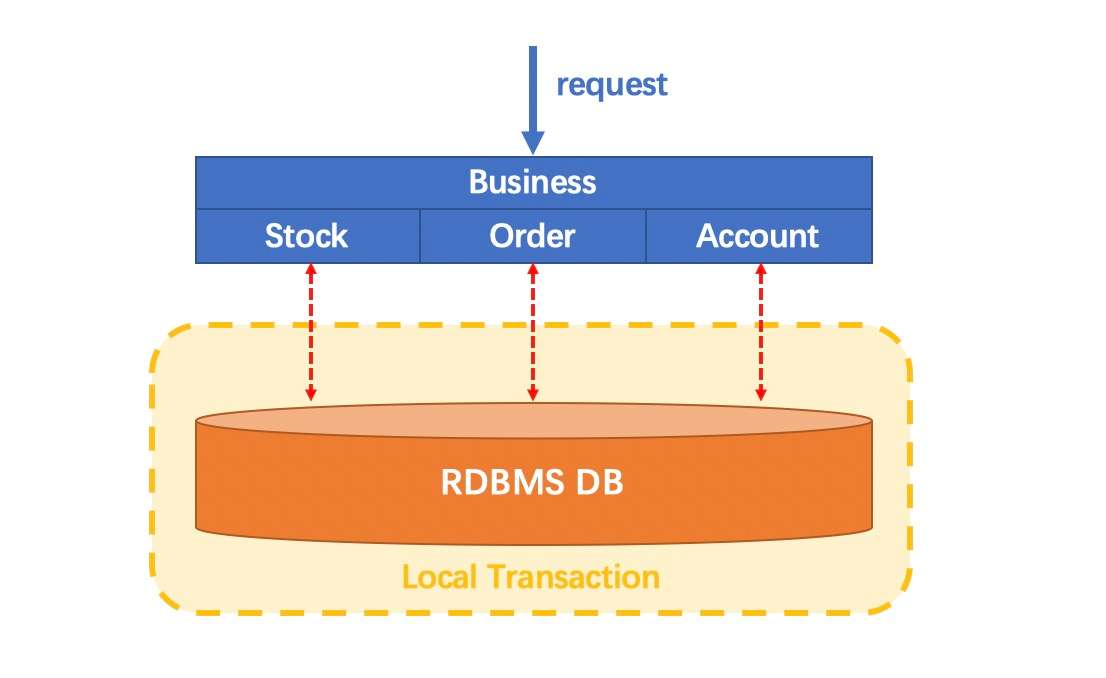 | ||
|
|
||
| 微服务架构发生了变化。上面提到的 3 个模块被设计为 3 个不同数据源之上的 3 个服务([Pattern: Database per service](http://microservices.io/patterns/data/database-per-service.html))。 每个服务内的数据一致性自然由本地事务保证。 | ||
|
|
||
| **但是整个业务逻辑范围呢?** | ||
|
|
||
|  | ||
|
|
||
| ### Seata 是怎么做的呢? | ||
|
|
||
| Seata 只是上述问题的一个解决方案。 | ||
|
|
||
| 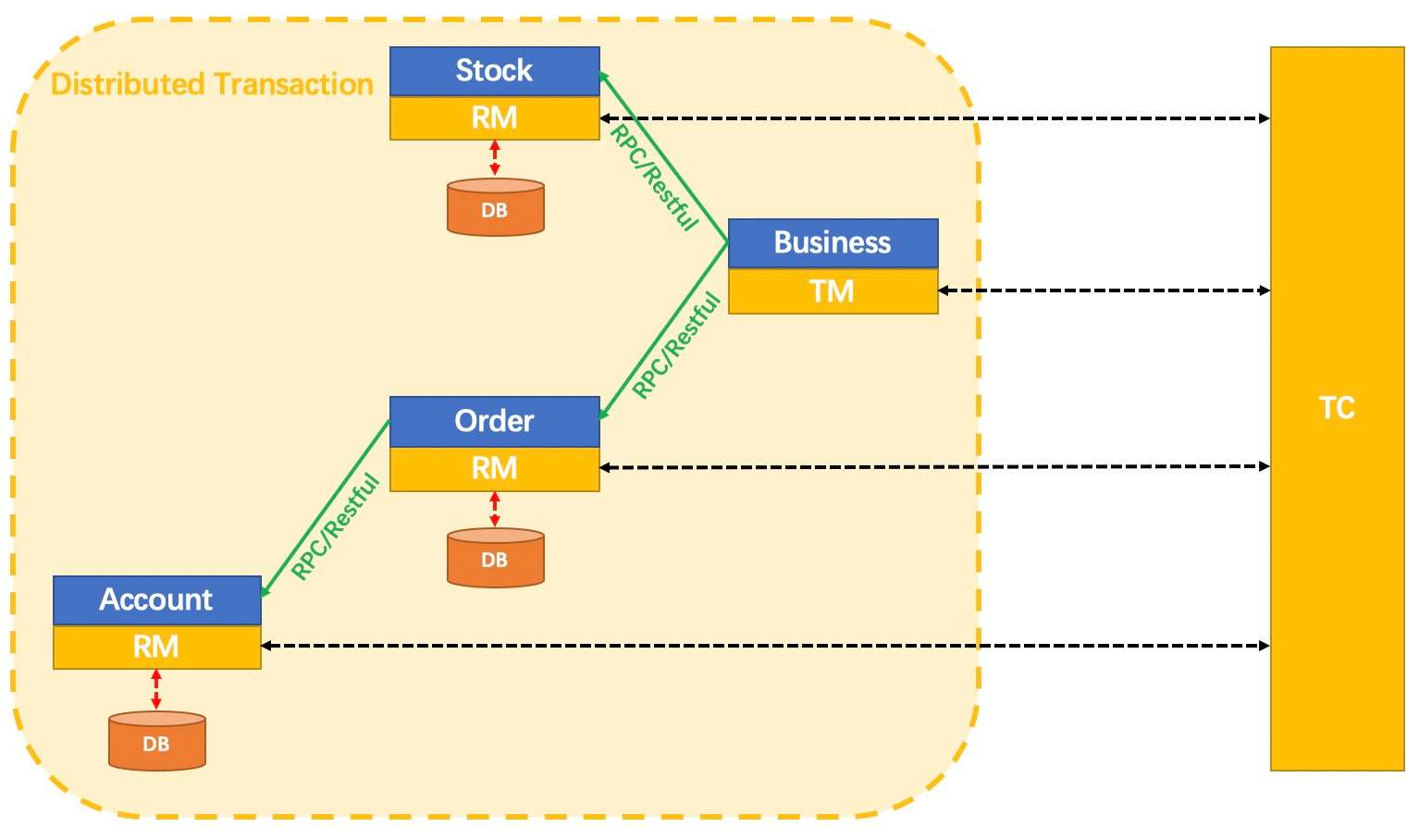 | ||
|
|
||
| 首先,如何定义一个 **分布式事务**? | ||
|
|
||
| 我们说,**分布式事务** 是由一批分支事务组成的 **全局事务**,而通常 **分支事务** 只是本地事务。 | ||
|
|
||
| 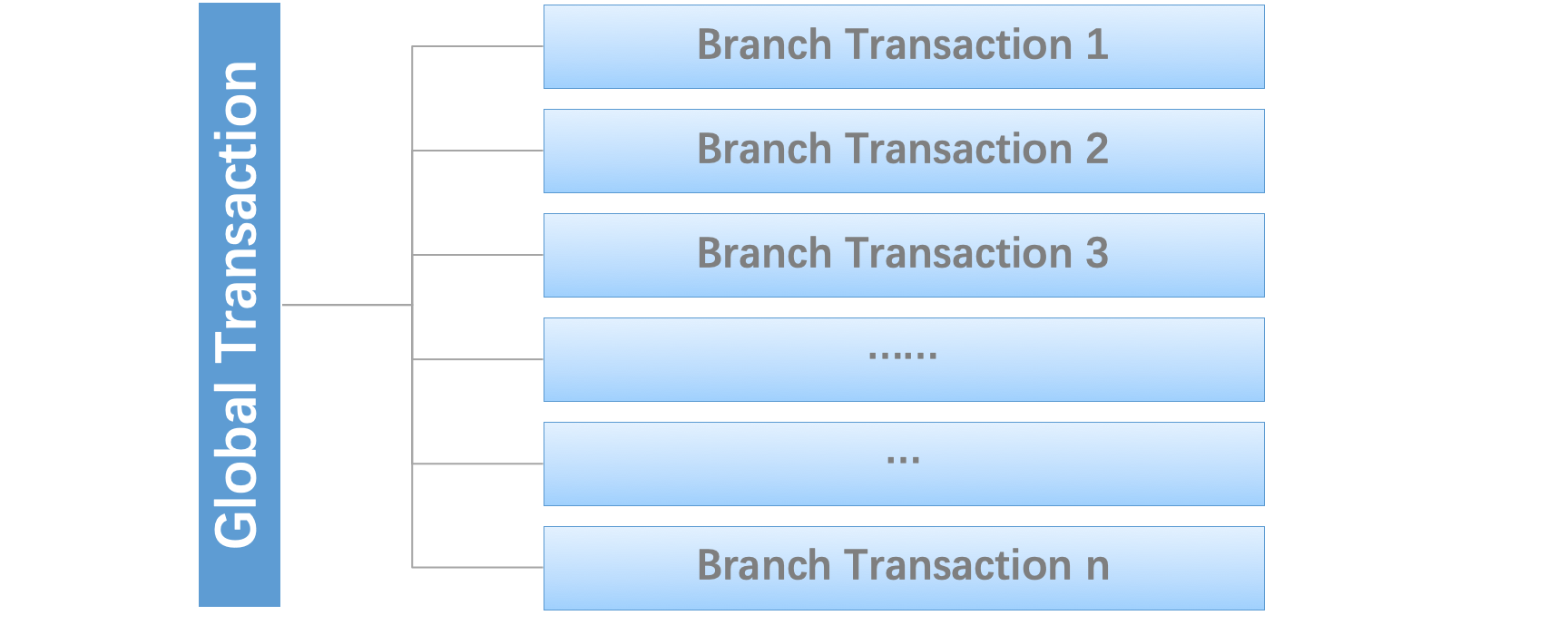 | ||
|
|
||
| 在 Seata 框架中,有三个角色。 | ||
|
|
||
| - **事务协调者(TC):** 维护全局和分支事务的状态,推动全局提交或回滚。 | ||
|
|
||
| - **事务管理者(TM):** 定义全局事务的范围:开始一个全局事务,提交或回滚一个全局事务 | ||
|
|
||
| - **资源管理这(RM):** 管理分支事务工作的资源,与TC对话以注册分支事务和报告分支事务的状态,并推动分支事务的提交或回滚。 | ||
|
|
||
| 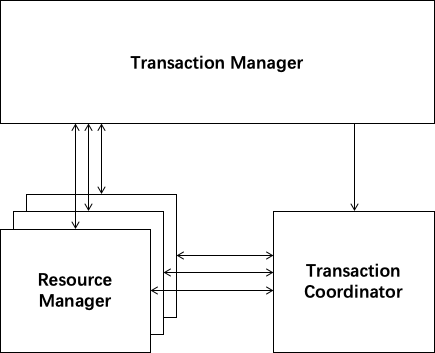 | ||
|
|
||
| Seata 管理的分布式事务的一个典型生命周期: | ||
|
|
||
| 1. TM 要求 TC 开始一个新的全局事务。TC 生成一个代表全局事务的 XID。 | ||
|
|
||
| 2. XID 是通过微服务的调用链传播的。 | ||
|
|
||
| 3. RM 将本地事务登记为 XID 对应的全局事务分支,并提交给 TC。 | ||
|
|
||
| 4. TM 要求 TC 提交或回滚 XID 的相应全局事务。 | ||
|
|
||
| 5. TC 驱动 XID 对应的全局事务下的所有分支事务,完成分支提交或回滚。 | ||
|
|
||
| 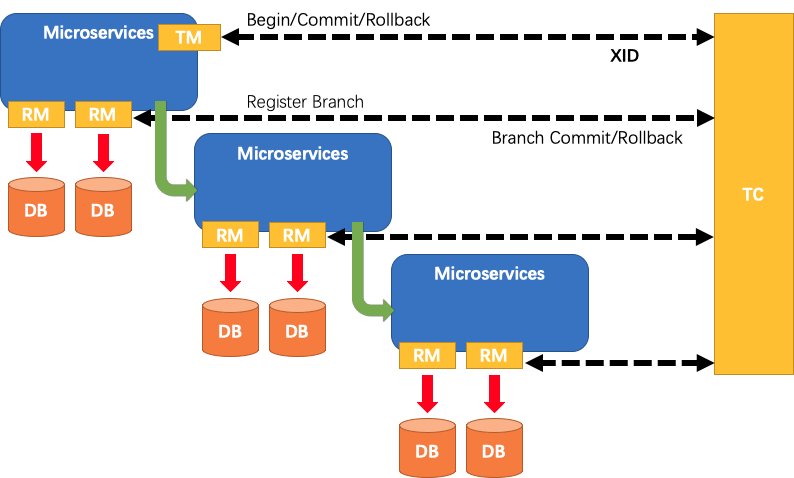 | ||
|
|
||
| 关于原理和设计的更多细节,请访问 [Seata wiki page](https://seata.io/zh-cn/docs/overview/what-is-seata.html)。 | ||
|
|
||
| ## Seata-PHP TODO 列表 | ||
|
|
||
| - [ ] TCC | ||
| - [ ] XA | ||
| - [x] AT | ||
| - [ ] SAGA | ||
| - [x] TM | ||
| - [ ] RPC 通信 | ||
| - [ ] 防悬挂 | ||
| - [ ] 空回滚 | ||
| - [ ] 注册中心 | ||
| - [ ] Metric 监控 | ||
| - [x] 示例 | ||
|
|
||
| ## 怎样运行 Seata-PHP? | ||
|
|
||
| 1. 下载服务端 [**seata java**](https://seata.io/zh-cn/blog/download.html) 启动 TC 服务端. 可以参考 [**seata 部署指南**](https://seata.io/zh-cn/docs/ops/deploy-guide-beginner.html) 。 | ||
|
|
||
| 2. 在 [**seata-skeleton**](https://github.com/PandaLIU-1111/seata-skeleton) 环境中运行 Seata-PHP。 | ||
|
|
||
|
|
||
| ## 如何成为贡献者? | ||
|
|
||
| Seata-PHP 正处于建设阶段。 欢迎行业同仁入群参与其中,与我们一起推动 Seata-PHP 的建设!如果你想给 Seata-PHP 贡献代码,可以参考 [**code contribution Specification**](./300.contributing/README.md) 文档来了解社区的规范,也可以加入我们的社区钉钉群: 44788115 ,一起沟通交流! | ||
|
|
||
| ## License | ||
|
|
||
| Seata-PHP 使用 Apache 许可证2.0版本,请参阅 [LICENSE 文件](https://github.com/seata/seata-php/blob/master/LICENSE)了解更多。 | ||
This file contains bidirectional Unicode text that may be interpreted or compiled differently than what appears below. To review, open the file in an editor that reveals hidden Unicode characters.
Learn more about bidirectional Unicode characters
Add this suggestion to a batch that can be applied as a single commit.
This suggestion is invalid because no changes were made to the code.
Suggestions cannot be applied while the pull request is closed.
Suggestions cannot be applied while viewing a subset of changes.
Only one suggestion per line can be applied in a batch.
Add this suggestion to a batch that can be applied as a single commit.
Applying suggestions on deleted lines is not supported.
You must change the existing code in this line in order to create a valid suggestion.
Outdated suggestions cannot be applied.
This suggestion has been applied or marked resolved.
Suggestions cannot be applied from pending reviews.
Suggestions cannot be applied on multi-line comments.
Suggestions cannot be applied while the pull request is queued to merge.
Suggestion cannot be applied right now. Please check back later.
There was a problem hiding this comment.
Choose a reason for hiding this comment
The reason will be displayed to describe this comment to others. Learn more.
建议用这个格式
There was a problem hiding this comment.
Choose a reason for hiding this comment
The reason will be displayed to describe this comment to others. Learn more.
这样图标无法居中